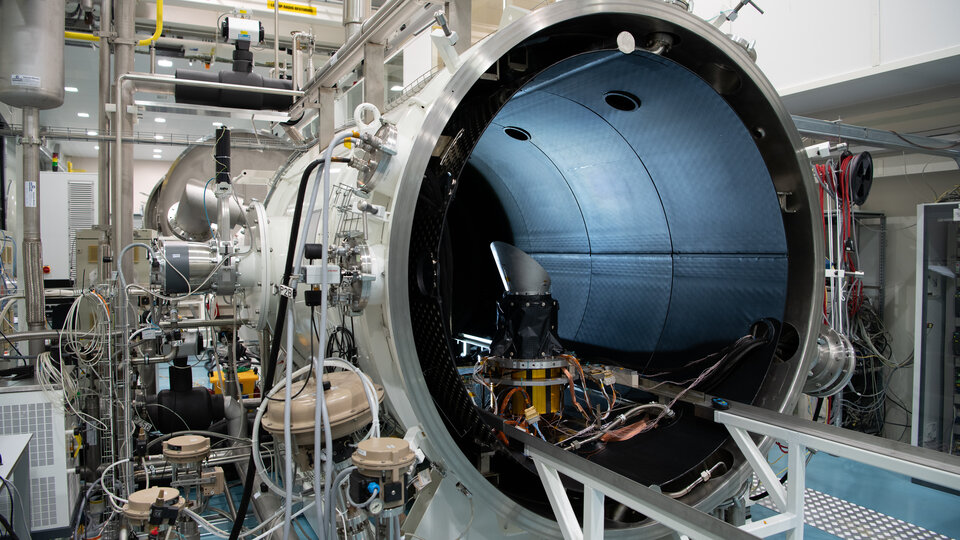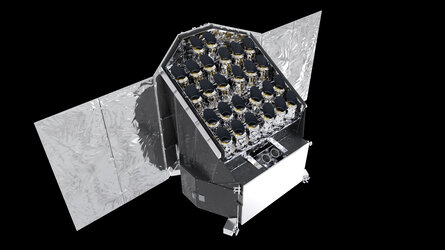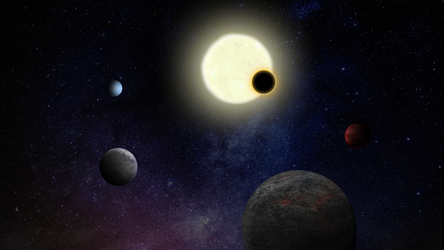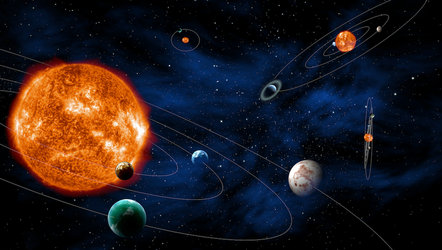Plato factsheet
Overview of the Plato mission
Name: Plato (PLAnetary Transits and Oscillations of stars)
Planned launch: 2026
Mission theme: Studying terrestrial planets in orbits up to the habitable zone of Sun-like stars, and characterising these stars
Status: Plato was selected as the third medium (‘M-class’) mission in ESA's Cosmic Vision 2015–25 plan in February 2014. When Plato was adopted, it was decided to carry out an extra milestone review of the mission in January 2022, because of the risks associated with development Plato’s complex set of 26 cameras. Plato successfully passed this review and the next major milestone is the spacecraft critical design review in 2023–2024, which will verify the detailed design of the complete spacecraft before proceeding with assembly.
Mission objectives: Does a second Earth exist in the Universe? Planet hunter Plato will focus on the properties of rocky planets orbiting Sun-like stars. In particular, Plato will discover and characterise planets in orbits up to the habitable zone – the ‘goldilocks’ region around a star where the temperature is just right for liquid water to exist on a planet’s surface.
Plato will characterise hundreds of rocky (including Earth twins), icy or giant planets by providing exquisite measurements of their radii (3% precision), masses (better than 10% precision) and ages (10% precision). This will revolutionise our understanding of planet formation and the evolution of planetary systems, as well as the potential habitability of these diverse worlds.
As well as looking at these planets, Plato will analyse their host stars. Using data from the mission, scientists hope to perform stellar seismology, gathering evidence of ‘starquakes’ in the imaged stars. This will give insight into the characteristics and evolution of the stars, improving our understanding of entire planetary systems.
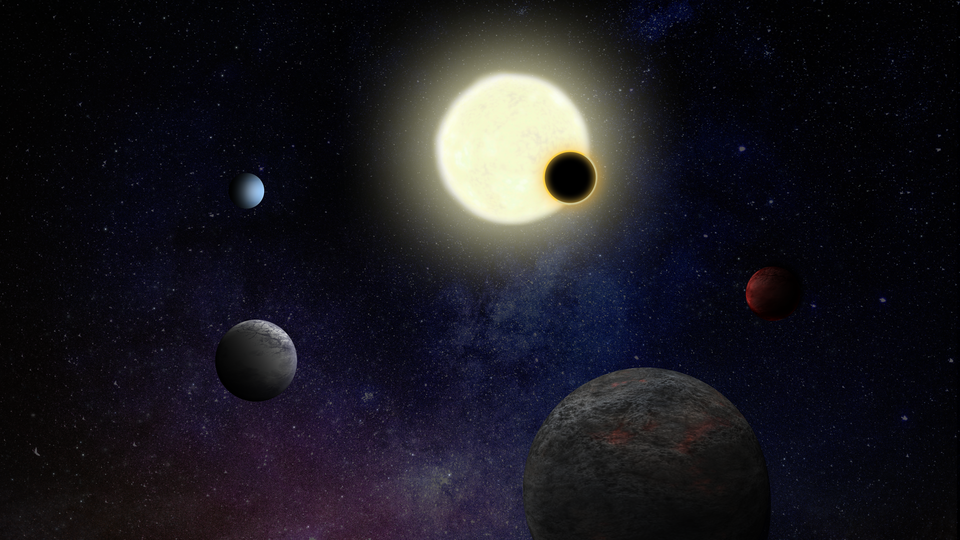
What’s special?: Plato will use 26 cameras at once to observe terrestrial planets in orbits up to the habitable zone of bright Sun-like stars, and to characterise these stars. Using such a large number of cameras will enable a combined higher ‘signal-to-noise’ ratio and larger field of view than has been possible with previous missions. Through the observations of bright stars, Plato will assemble the first catalogue of confirmed and characterised planets with known densities, compositions, and ages, which will include planets in the habitable zone of Sun-like stars.
Spacecraft and instruments: Plato will have a launch mass of about 2300 kg and a size of 3.5 x 3.1 x 3.7 metres when stowed during launch. Once its solar panels are deployed, it will have a wingspan of around nine metres and the total surface area of its solar panels will be over 30 square metres.
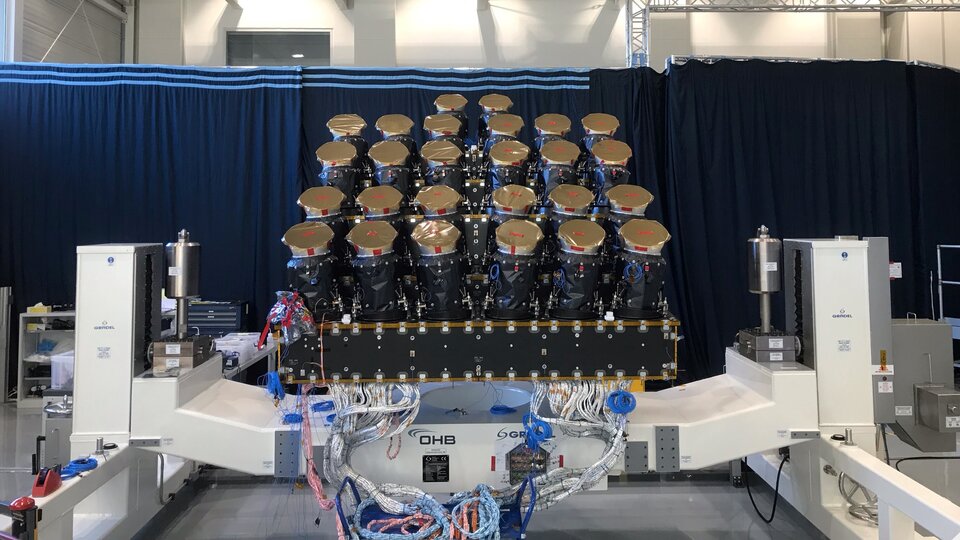
The spacecraft is made up of two key parts:
- The payload module hosts 26 cameras that detect visible light. Two of these cameras will work extra quickly to image brighter stars.
- The service module contains all the systems necessary to operate the spacecraft, including a sunshield, propulsion system, communication system, thermal control system, attitude control system, and control and data management system.
Journey and orbit: Plato will be launched with an Ariane 6 into orbit around the Sun-Earth Lagrange point 2 (L2), 1.5 million kilometres beyond Earth in the direction away from the Sun.
Lifetime: Four years, with possible extensions up to 8.5 years
Legacy: Plato will build on the accomplishments of the CNES/ESA Corot mission, as well as NASA’s Kepler, K2 and TESS missions. It will expand on the work of ESA’s exoplanet watcher, Cheops, which is currently performing a first characterisation of known planets orbiting nearby bright stars.
Plato will identify interesting targets for further investigation by the NASA/ESA/CSA James Webb Space Telescope and by ground-based observatories. Plato’s discoveries will be complemented by exoplanet findings by ESA’s Gaia mission and by NASA’s future Roman Space Telescope.
Plato will be followed by ESA’s Ariel, scheduled for launch in 2029, which will observe a large and diverse sample of exoplanets to study their atmospheres in great detail.
Partnership: Plato is an ESA-led mission, with Germany’s OHB System AG nominated as prime contractor. The spacecraft will be built and assembled by OHB together with Thales Alenia Space (France and the UK) and Beyond Gravity in Switzerland.
The scientific payload, consisting of the cameras and electronic units, is provided through a collaboration between ESA and the Plato Mission Consortium. This Consortium is composed of various European research centres, institutes and industries.
Plato mission facts
- Observing more than 200 000 stars
- Looking for tiny regular dips in the light from stars caused by the transit of a planet across the face of the star
- 26 telescope cameras pointing at a large area of the sky
- Acquiring images every 25 seconds, and every 2.5 seconds for the two ‘fast’ cameras, for at least two years per target star
- 81.4-megapixel images per camera, resulting in two-billion-pixel images for the overall spacecraft – the most ever for a space mission



